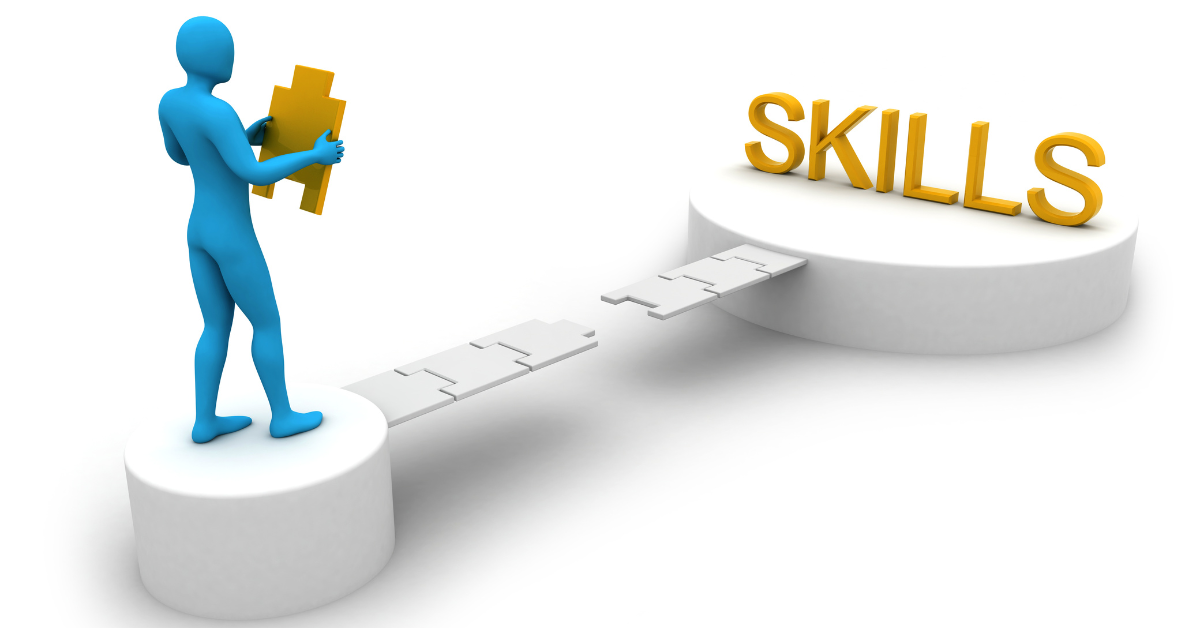Posted on October 31st, 2025

Success in tech depends not just on innovation but on having the right people with the right skills to power innovation. As industries evolve with advancements in AI, automation, and data analytics, the demand for specialized competencies continues to outpace supply. Companies that fail to anticipate and address these skill shifts risk falling behind their competitors.
This is why conducting a skills gap analysis has become a cornerstone of modern talent strategy. It’s no longer just an HR exercise — it’s a business-critical process that ensures an organization’s workforce is prepared for the future.
A skills gap analysis is the structured process of identifying the gap between the skills your organization currently has and the skills it needs to meet both short- and long-term goals. It provides a clear, data-backed picture of your workforce’s capabilities and pinpoints where development or hiring is necessary.
In simple terms, it answers three essential questions:
When organizations understand what is a skills gap analysis, they can make informed decisions about training, hiring, and succession planning. Using advanced skill gap analysis tools, leaders can quantify workforce strengths and weaknesses, prioritize learning investments, and design strategies that align talent capabilities with evolving business demands.
If you’re new to this concept, you can explore this comprehensive guide on skill gap analysis to understand the methods, benefits, and implementation steps in detail.
Now, let’s explore why conducting a workforce skills gap analysis is crucial to long-term success and how it can transform every aspect of talent management.
The primary importance of conducting a skills gap analysis lies in its ability to align workforce capabilities with an organization’s strategic vision. As companies embrace emerging technologies like AI, machine learning, and automation, their success depends on whether their employees have the right technical and analytical skills to implement these changes.
A forward-looking skills gap analysis identifies the competencies the company will need three to five years from now. For example, a manufacturing firm planning to implement robotics or IoT must assess whether its technicians possess the coding and systems integration expertise required for the transition.
By using data-driven skill gap analysis tools, organizations can forecast where current capabilities fall short, ensuring that training and recruitment strategies are designed to support upcoming business priorities. This foresight prevents costly last-minute hiring or project delays and transforms workforce planning into a competitive advantage.
To put it simply, conducting a skills gap analysis future-proofs your business by making sure you have the right talent in place—today and tomorrow.
One of the most practical benefits of a skills gap analysis is the optimization of training and development budgets. Without this analysis, companies often spend resources on generic training programs that don’t directly improve performance or close mission-critical gaps.
A targeted workforce skills gap analysis pinpoints which specific skills need improvement and within which teams. For instance, if marketing employees lack data visualization expertise, the organization can direct L&D funds toward tools like Tableau or Power BI rather than broad “digital skills” workshops.
This approach ensures every dollar spent on learning has measurable impact. It also allows HR teams to distinguish between gaps that can be filled internally (through training) and those that require external recruitment.
Moreover, when employees see their organization investing in personalized development plans based on objective data, morale and retention improve. They feel valued, capable, and future-ready—key outcomes of an effective skills gap analysis.
A skills gap analysis doesn’t just improve training—it strengthens the entire talent lifecycle, from recruitment to leadership transition.
In recruitment, the analysis acts as a blueprint for smarter hiring. Instead of relying on generic job descriptions, recruiters can target candidates who possess the exact competencies the organization lacks. For example, if the workforce skills gap analysis identifies a shortage in cloud architecture knowledge, hiring efforts can be focused specifically on that skill set.
For onboarding, the insights from a skills gap analysis enable personalized training plans that accelerate new hires’ productivity. New employees can immediately address known gaps, reducing the time it takes to contribute effectively.
In succession planning, the analysis helps identify future leaders and defines the skills they must develop to step into advanced roles confidently. This ensures a smooth transition when key personnel retire or move on, safeguarding institutional knowledge.
With the help of sophisticated skill gap analysis tools, HR leaders can map out clear development tracks for high-potential employees and create a stronger, more resilient leadership pipeline.
While data and analysis are central to this process, the human impact of a skills gap analysis is equally profound.
When employees know that the organization is actively identifying and addressing skill gaps, it sends a powerful message: we value your growth. This fosters trust, engagement, and loyalty.
Employees see opportunities to upskill and advance based on clear, objective criteria rather than subjective evaluations.
From a performance standpoint, the results are tangible. When the right people have the right skills, projects move faster, quality improves, and innovation flourishes. A workforce that’s well-equipped to handle its responsibilities becomes more agile and efficient—attributes that are essential in competitive, tech-driven industries.
Additionally, modern skill gap analysis tools often include self-assessment features, empowering employees to take ownership of their growth. This participatory approach turns learning into a collaborative journey rather than a top-down directive.
Ultimately, organizations that consistently conduct a skills gap analysis create a culture of continuous improvement—one where morale and performance reinforce each other.
A well-executed skills gap analysis delivers measurable business outcomes. By quantifying workforce capabilities and aligning them with business objectives, organizations can directly link training and hiring investments to financial performance.
With precise data on what skills drive success, HR teams can justify L&D budgets, minimize wasted spending, and ensure that every program contributes to key metrics like productivity, retention, and innovation speed.
Additionally, ongoing workforce skills gap analysis plays a vital role in risk management and business continuity. When companies know where skill vulnerabilities exist, they can mitigate operational risks and maintain momentum even amid disruptions such as leadership changes, digital transformations, or sudden market shifts.
This clarity ensures that the organization remains adaptable, resilient, and ready for any challenge.
In the modern economy, talent is the ultimate differentiator. But having talent isn’t enough—it’s about having the right talent, equipped with the right skills, at the right time. That’s why conducting a skills gap analysis is not a one-time event but an ongoing strategic process.
Regular assessments using advanced skill gap analysis tools enable organizations to evolve alongside technology and market demands. The insights gained help leaders build robust
training programs, informed recruitment strategies, and data-backed succession plans—all while keeping employees engaged and empowered.
Is your organization ready to meet the skill demands of tomorrow? Don’t let hidden talent gaps slow your growth or threaten your competitive edge.
At W3Global, we help businesses design and implement comprehensive workforce skills gap analysis frameworks that leverage predictive analytics, AI-driven insights, and strategic consultancy. From identifying key skill gaps to developing tailored upskilling plans, we ensure your workforce stays agile, capable, and future-ready.
Partner with W3Global today to turn workforce insight into strategic advantage — and transform your talent strategy for sustainable success.
 The Most Effective Employee Retention Strategies for Tech Companies in 2025
The Most Effective Employee Retention Strategies for Tech Companies in 2025 What is the Importance of Conducting a Skills Gap Analysis
What is the Importance of Conducting a Skills Gap Analysis 10 Best Time Management Interview Questions for Remote and Hybrid Roles
10 Best Time Management Interview Questions for Remote and Hybrid Roles How AI Is Transforming the Staffing Industry in 2025
How AI Is Transforming the Staffing Industry in 2025 The Real Hiring Problems No One Talks About — And How to Solve Them
The Real Hiring Problems No One Talks About — And How to Solve Them Top Hiring Trends to Watch in 2025: What Employers Need to Know
Top Hiring Trends to Watch in 2025: What Employers Need to Know 10 Data‑Driven Strategies to Combat Employee Attrition in 2025
10 Data‑Driven Strategies to Combat Employee Attrition in 2025 Reignite Your Spark: Reclaiming Joy and Authenticity at Work in the Age of Work-Life Integration
Reignite Your Spark: Reclaiming Joy and Authenticity at Work in the Age of Work-Life Integration Launching Your Career from Anywhere: A Guide to Thriving in the World of Remote Entry-Level Jobs
Launching Your Career from Anywhere: A Guide to Thriving in the World of Remote Entry-Level Jobs Top 20 Popular Behavioral Interview Questions and How to Answer Them in 2025
Top 20 Popular Behavioral Interview Questions and How to Answer Them in 2025 How to Avoid Employee Burnout: 10 Proven Strategies for a Healthier Workplace
How to Avoid Employee Burnout: 10 Proven Strategies for a Healthier Workplace 10 Unique Interview Questions to Ask Candidates for Better Insights
10 Unique Interview Questions to Ask Candidates for Better Insights How to Craft the Perfect Resume: What a Proper Resume Looks Like in 2025
How to Craft the Perfect Resume: What a Proper Resume Looks Like in 2025 10 Steps to Build an Effective Career Development Plan for Long-Term Success
10 Steps to Build an Effective Career Development Plan for Long-Term Success